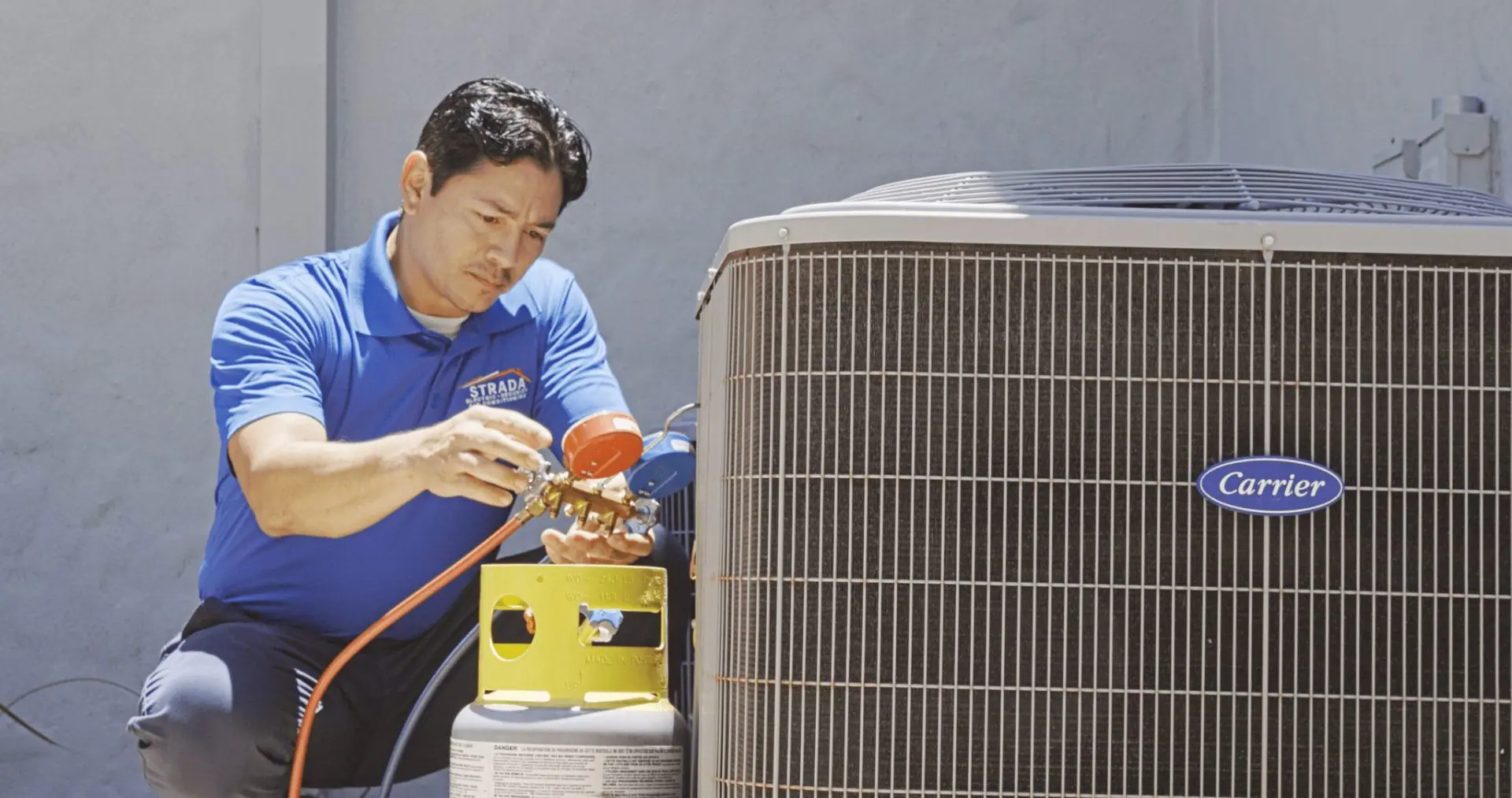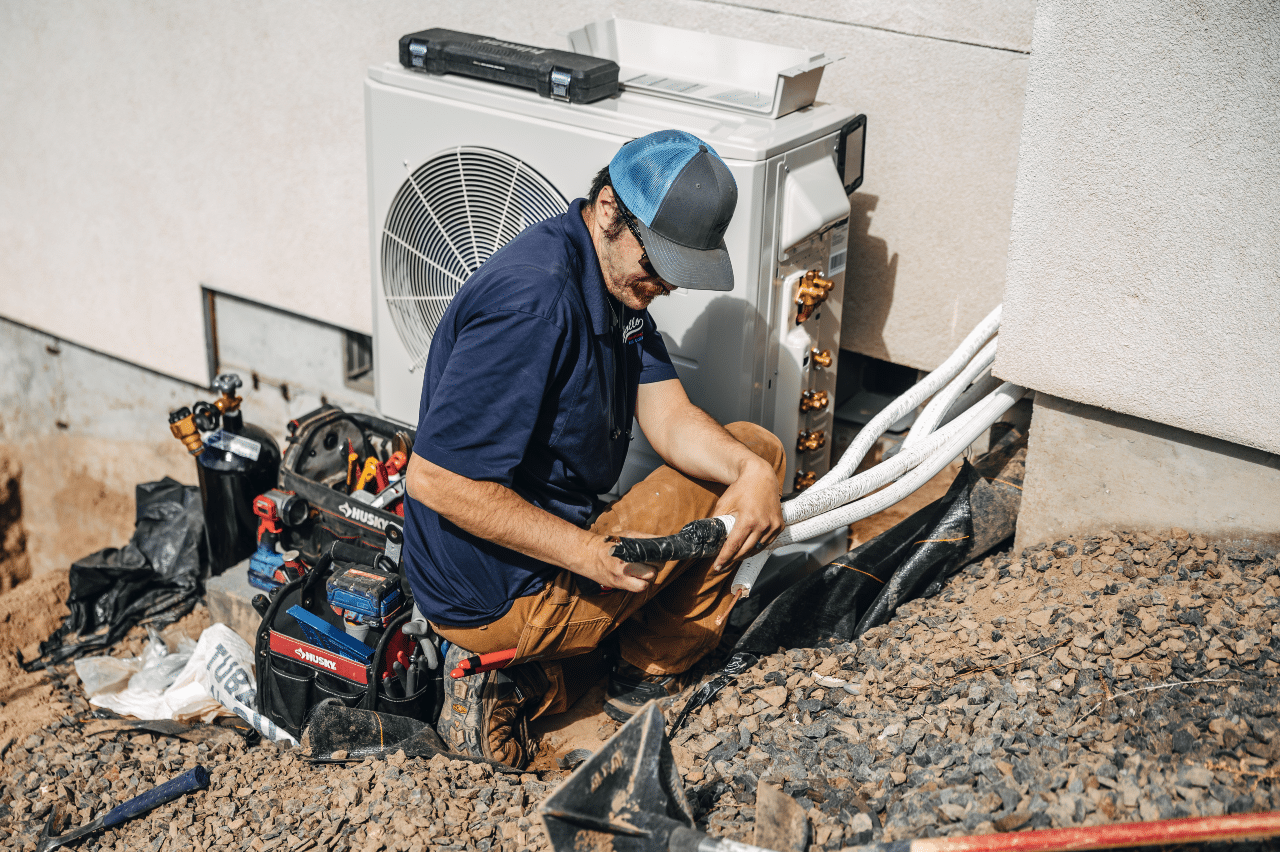Expert Tactics to Improve Indoor Air Quality with ductless mini splits
Expert Tactics to Improve Indoor Air Quality with ductless mini splits
Blog Article
Just How a Warm Pump and Heating System Work With Each Other to Enhance Your Home's Heating Performance
Recognizing exactly how a heat pump and heater collaborate is essential for home owners looking for efficient home heating remedies. Each system has its staminas, offering a balanced strategy to home convenience. The heatpump excels in modest temperature levels, while the heater provides fast heat throughout extreme cold. This harmony not only reduces power prices yet additionally boosts the life expectancy of both home appliances. What elements influence this partnership, and how can home owners maximize their benefits?
Recognizing Heat Pumps: Just How They Work
Lots of people may be strange with their inner functions, warmth pumps play an important duty in modern heating systems. These gadgets run by moving heat from one location to one more, using the concepts of thermodynamics. In cooler months, a heat pump extracts warm from the outdoors air, ground, or water, and transfers it inside to warm the living area. Conversely, during warmer months, it can turn around the process, working as an a/c by removing warmth from inside to the outside.Heat pumps consist of an evaporator, expansion, compressor, and condenser shutoff. The refrigerant within the system takes in heat as it vaporizes at low temperatures and stress. The compressor after that enhances the pressure and temperature of the refrigerant, allowing it to launch warmth as it condenses. This reliable process can significantly minimize energy consumption compared to traditional home heating approaches, making warm pumps a sustainable selection for climate control in homes.
The Role of Furnaces in Home Home Heating
Heaters play a necessary function in home heating by supplying a reliable resource of heat throughout the chillier months. They operate by generating warmth with combustion or electric resistance, dispersing it throughout the home using air ducts or radiant systems. The efficiency of a furnace is frequently measured by its Yearly Gas Use Effectiveness (AFUE) score, which indicates how properly the system converts gas into heat.Furnaces can utilize numerous energy sources, including gas, oil, lp, or electrical power, enabling property owners to pick the most suitable choice for their needs. Unlike warm pumps, which may battle in extreme cold, heaters keep regular performance, making certain that indoor temperatures continue to be comfortable despite exterior conditions. Furthermore, modern-day furnaces frequently come equipped with sophisticated modern technology, such as variable-speed blowers and wise thermostats, improving their performance and responsiveness. This adaptability makes heaters a critical component in all-inclusive home heating strategies.

Benefits of Utilizing Both Systems With Each Other
Incorporating the toughness of both heaters and heatpump can cause an extra efficient and reliable home heating remedy. Utilizing both systems allows homeowners to take benefit of the heat pump's power performance throughout milder temperatures while counting on the furnace for more severe cold conditions. This double method can considerably decrease energy expenses, as heatpump consume much less electrical energy than typical home heating techniques when temperatures are moderate.Additionally, making use of both systems with each other can improve comfort levels in the home. Heatpump can offer regular, even home heating, while heating systems can quickly increase ambient temperature levels when needed. The combination of both systems can expand the lifespan of devices by lowering wear and tear on each unit, as they share the work. Ultimately, home owners can enjoy a well balanced, cost-effective heating option that readjusts perfectly to varying climate condition, making sure a cozy and welcoming home throughout the winter months.
Exactly How Warmth Pumps and Furnaces Enhance Each Other
When property owners incorporate heatpump and heaters, they produce a complementary furnace that optimizes effectiveness and convenience. Warmth pumps operate by moving heat from the outside air or ground, making them very efficient in modest environments. They excel throughout milder temperature levels, supplying cost-effective home heating. Alternatively, heaters produce warm via burning or electric resistance, supplying solid, instant heat throughout severe cold conditions.The mix of these 2 systems permits vibrant adjustments based upon temperature level changes. During warmer months or milder winter months days, the warmth pump can take the lead, conserving power and decreasing prices. As temperatures drop, the furnace can flawlessly engage, making certain constant heat throughout the home. This harmony not just enhances power use however likewise enhances the lifespan of both systems, as each device runs within its ideal efficiency variety. With each other, they develop a well balanced atmosphere that adjusts to differing climate demands.
Optimizing Efficiency: Tips for Homeowners
Property owners can enhance their heating performance through several useful methods. Developing a regular upkeep schedule, incorporating smart thermostat modern technology, and applying efficient insulation and securing remedies are crucial actions. These actions not only enhance convenience yet likewise lower energy expenses.
Normal Maintenance Schedule
To guarantee maximum heating performance, developing a normal maintenance schedule is important for any type of home. Property owners must prioritize regular examinations of both heatpump and heaters to identify peak performance. This consists of altering air filters every one to 3 months, as blocked filters can considerably lower efficiency. Additionally, organizing specialist maintenance at the very least yearly allows service technicians to determine and resolve prospective issues before they intensify. Home owners need to likewise clean the heatpump's outside system to avoid particles build-up that can hinder air movement. By sticking to a regular upkeep timetable, property owners not only enhance their heating unit' effectiveness however additionally extend their life-span, bring about higher comfort and reduced power prices throughout the cooler months.
Smart Thermostat Combination
Integrating a wise thermostat into a home heating system can greatly boost energy performance, specifically as it permits precise control over temperature setups. These devices can learn the home owner's routine and preferences, immediately adjusting the temperature level to maximize comfort while minimizing power use. For example, next page they can reduce heating throughout times when the home is unoccupied, decreasing unneeded consumption. Numerous clever thermostats also supply real-time energy use information, additional resources making it possible for home owners to make educated choices regarding their heating behaviors. Furthermore, remote accessibility using smartphone applications enables individuals to change settings from anywhere, making sure the home is warm upon return. In general, smart thermostat integration not only enhances convenience yet substantially adds to energy savings and efficiency.
Insulation and Sealing Solutions
Smart thermostats play an essential duty in energy efficiency, yet their efficiency can be substantially enhanced by correct insulation and securing solutions. Home owners should prioritize insulating walls, attics, and floors to reduce heat loss. Premium insulation materials, such as spray foam or fiberglass, can substantially enhance thermal resistance. Furthermore, sealing voids around windows, air ducts, and doors protects against cold air infiltration and warm retreat. Weatherstripping and caulking work methods for attending to these leaks - heat pump service. Regular inspections for air leakages, along with using blower door tests, can help recognize problem areas. By investing in insulation and securing, homeowners can enhance the efficiency of their furnace, eventually causing lowered power consumption and reduced utility bills
Usual Misconceptions About Warmth Pumps and Furnaces
What mistaken beliefs border heatpump and furnaces? Many people mistakenly believe that heatpump are ineffective in chillier environments. Actually, contemporary heatpump are developed to run successfully also in reduced temperature levels, giving trustworthy home heating throughout winter season. Another common misconception is that heaters are constantly much more reliable than heatpump. However, this depends on the certain energy sources and performance ratings of the units in concern. Some might likewise think that utilizing both systems all at once is unneeded, however in reality, this mix can maximize home heating performance, especially during severe climate condition. Furthermore, people commonly presume that warmth pumps require continuous upkeep, when in truth, they have comparable upkeep requires to typical heating unit. By debunking these myths, house owners can make more enlightened decisions concerning their home heating options, inevitably leading to boosted comfort and energy efficiency in their homes.
Upkeep Considerations for Combined Equipments

Regularly Asked Questions
Can Warmth Pumps Work Successfully in Exceptionally Cold Climates?
Heatpump can battle in extremely cold environments because of lowered effectiveness and warmth extraction constraints. Nonetheless, developments in modern technology have brought about designs designed for better efficiency in such problems, enhancing their feasibility in extreme atmospheres.
How Much Time Do Heat Pumps and Furnaces Normally Last?
Heatpump usually last 15 to 20 years, while furnaces have a life expectancy of 15 to three decades. Routine maintenance can extend their longevity, guaranteeing reliable procedure and decreasing the requirement for premature substitutes.

What Is the Ordinary Cost of Putting Up Both Solutions?
The ordinary cost of mounting both a heatpump and a heating system typically varies in between $5,000 to $10,000 - heat pump service. Elements affecting this expense consist of system dimension, setup complexity, and regional labor prices
Exist Tax Rewards for Utilizing Energy-Efficient Home Heating Systems?
Numerous home owners ask about tax incentives for energy-efficient heating systems. Numerous federal and state programs frequently supply rebates or credit reports, encouraging the adoption of sustainable modern technologies to reduce power usage and advertise environmental duty.
Exactly how Do I Select the Right Dimension Heatpump and Heating System?
Choosing the appropriate dimension warmth pump and furnace entails determining the home's square video footage, considering insulation high quality, and reviewing neighborhood climate. Consulting an expert can ensure perfect system efficiency and power effectiveness based upon specific requirements. ductless mini splits. Understanding just how a warmth pump and heating system work together is vital for home owners looking for reliable heating remedies. In cooler months, a warmth pump essences heat from the outside air, ground, or water, and transfers it indoors to warm up the living room. When property owners integrate heat pumps and heating systems, they create a corresponding heating system that makes the most of effectiveness and convenience. Heat pumps run by transferring warmth from the outdoors air or ground, making them very reliable in modest climates. Warmth pumps can have a hard time in incredibly chilly climates due to decreased effectiveness and warm removal constraints
Report this page